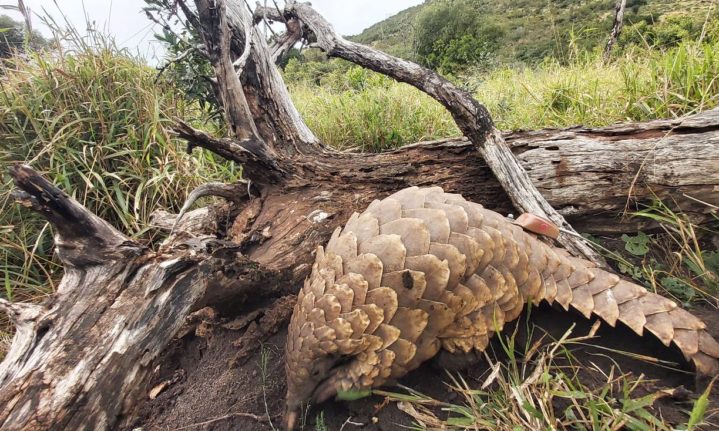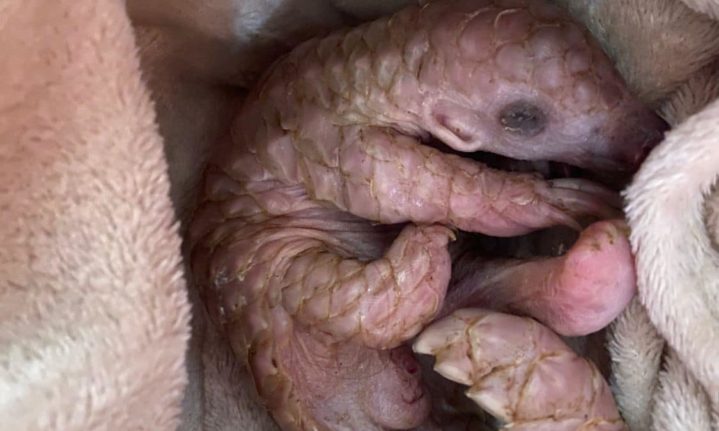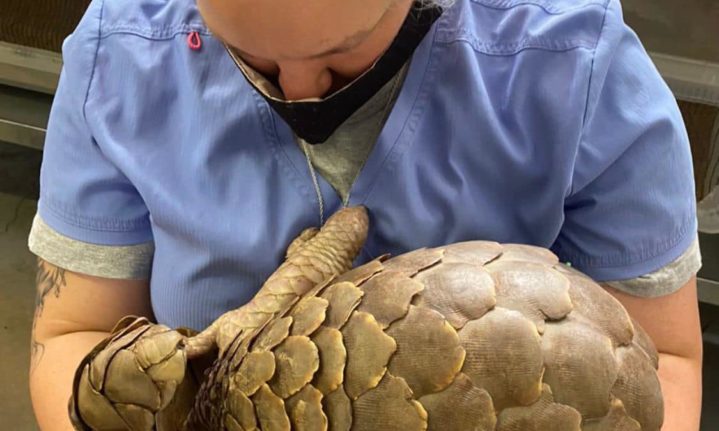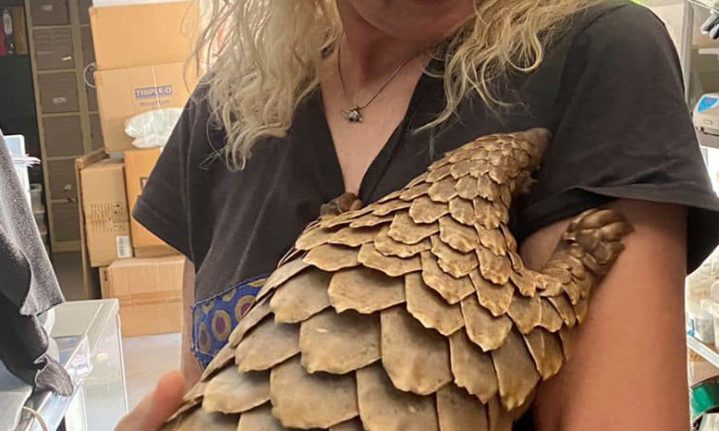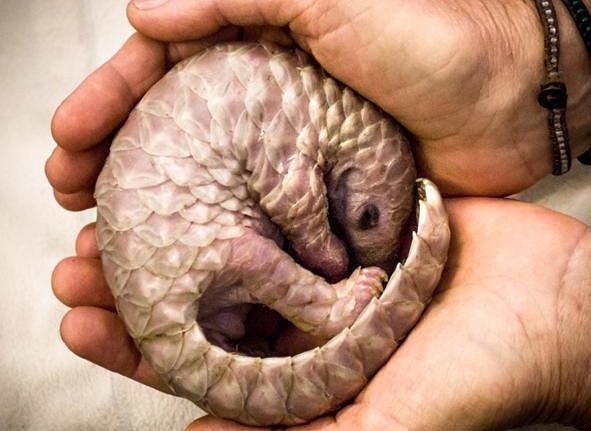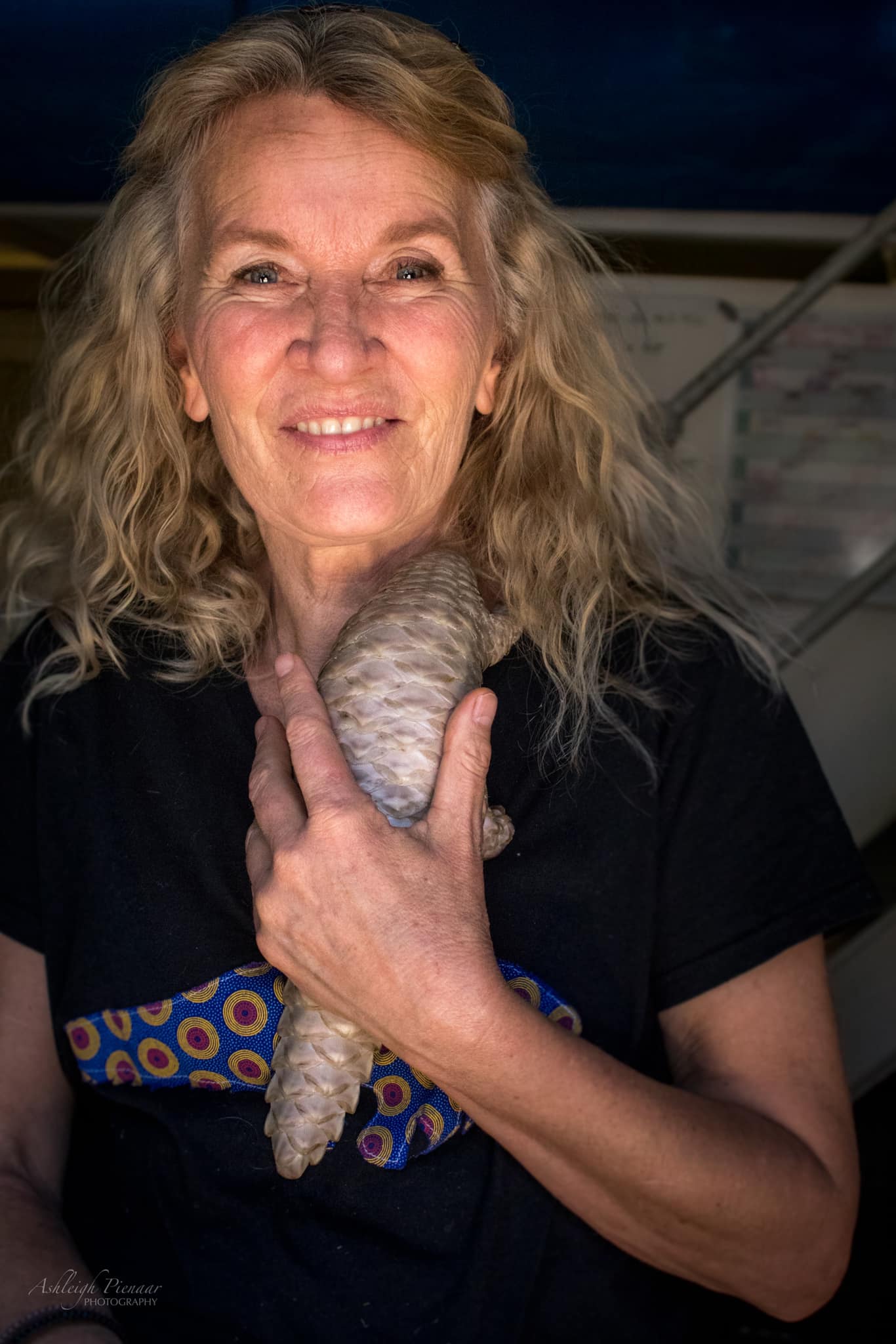Retrieved from the illegal trade by the African Pangolin Working Group, a pangolin, given the name Tayta, was discovered to be pregnant. She gave birth to a healthy pangopup at the Johannesburg Wildlife Veterinary Hospital, and they named the newborn Tot.
Tayta was very weak and did not produce much milk for her pup, so the journey to hand-rear Tot began. After being medically stabilized by Dr Karin Lourens, with support from Dr Kelsey Skinner and Sr Alicia Abbott, Tot was placed in the capable hands of Wildlife Rehabilitation Specialist and director of the Hospital, Nicci Wright. Nicci is also the Executive Director of the African Pangolin Working Group.
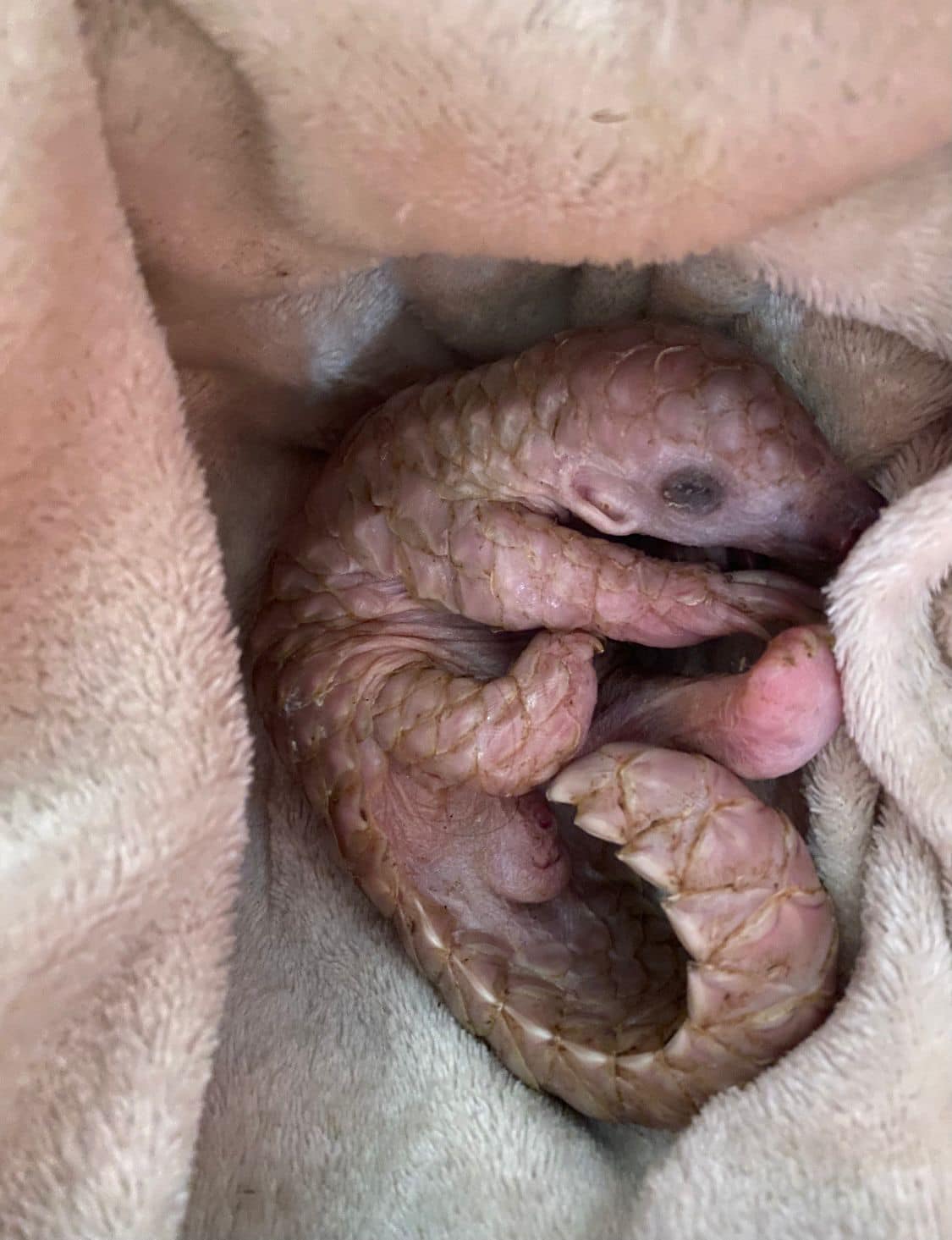
Pangopups are about 15 cm long at birth and weigh as little as 340 grams.
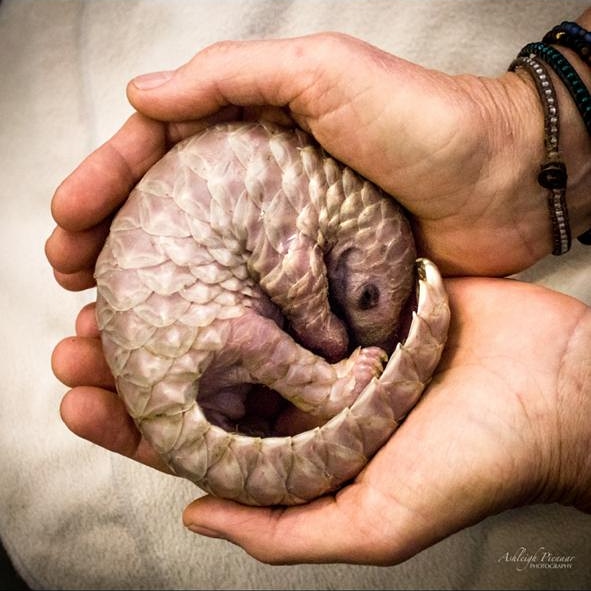
Credit: Ashley Pienaar
Since then, Tot has grown strong and healthy and is already in the process of a soft release into the wild under the watchful eyes of the Nkonka Private Camp and Phinda Private Game Reserve.
We spoke to Nicci about this incredible tale of survival.
What was it like caring for such a special animal from birth?
Handrearing any wildlife carries a responsibility with it because one has to have knowledge and to be aware of all the individual needs that the specific species requires – nutritionally and developmentally. Raising a Temminck’s pangolin pup is the same but has an added responsibility because of their endangered status.
I was also determined to make sure that she would be healthy and well developed enough to ultimately be released and be able to sustain herself because of the rehabilitation process she is undergoing.
Does Tot have a ‘personality’?
Each pangolin we work with have their own unique personalities and Tot is no different! She is gentle and calm yet she can get excited and enjoy a good rough and tumble play session. The bond between Tot and I is special and we have shared some extraordinary moments of tenderness, fun and enjoyment. It is these moments that has given me an insight into pangolin behaviour and nature that one would only get through a close relationship like this.
Nicci and Tot. Credit: Ashleigh Pienaar
How will her progress and wellbeing in the wild be monitored and for how long?
Tot is already in the second phase of her rehabilitation process. This means she is in situ [on site] on the reserve that she will ultimately be released onto. She goes out on daily foraging walks in order to locate and feed on the various species of ants and termites that she needs. These supervised walks can last up to 5 hours a day and are allowing Tot to acclimatise to the new habitat and everything it holds – ant species, scent and sight of other wildlife, weather and temperature.
Once she is an optimum weight (6.5kgs), she will have both a VHF and a satellite telemetry unit fitted and go into a soft release programme. This is closely monitored to ensure that she is managing well in the wild in terms of feeding, finding suitable burrows and establishing her own territory. This is a unique opportunity to record and document the life of a Temminck’s pangolin from birth onward and Tot will be monitored for as long as possible into the future.
What are the chances of her surviving and reproducing, in terms of statistics?
There is no reason why she shouldn’t survive and reproduce pups of her own one day when she is at the right age. There are male pangolins available for her to mate with when the time is right. She is a big, healthy pangolin and her innate instincts enhance her behaviour which is being stimulated and facilitated through the rehabilitation process. Unless there is an un-forseen circumstance, we are confident that Tot will lead a normal, wild life.
What are the latest pangolins population numbers in the world and South Africa, do you have an idea?
This is a question that we do not have an answer for, unfortunately. Pangolins are cryptic animals which are rarely seen in the wild and this makes counting them impossible.
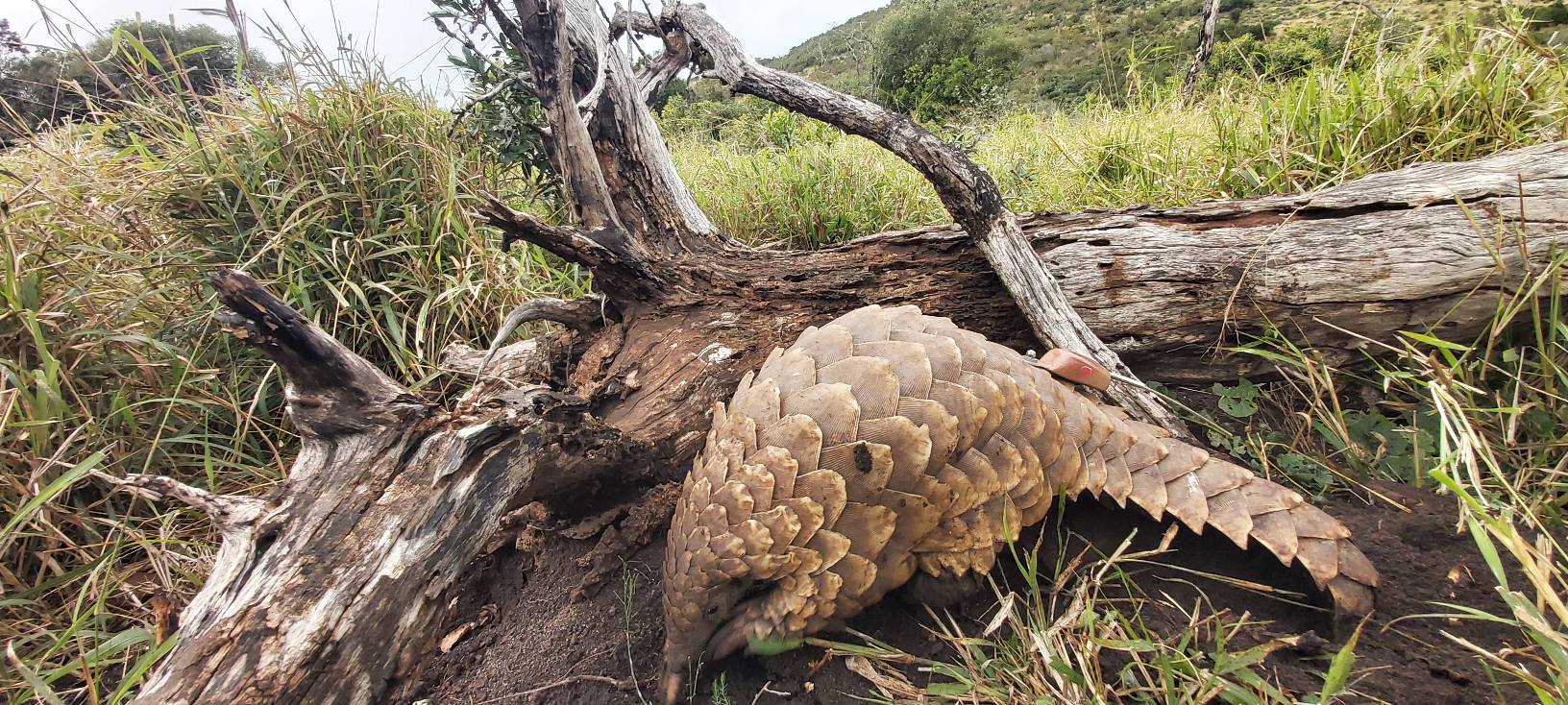
Tot exploring her new habitat. Credit: Nicci Wright.
The African Pangolin Working Group (APWG) and the Johannesburg Wildlife Veterinary Hospital (JWVH) work closely together on various aspects with Temminck’s pangolin, including retrievals off the illegal trade, veterinary treatment and rehabilitation and the release processes (APWG). Nicci’s work is supported by the Humane Society International – Africa (HSI-Africa).
ALSO READ:









